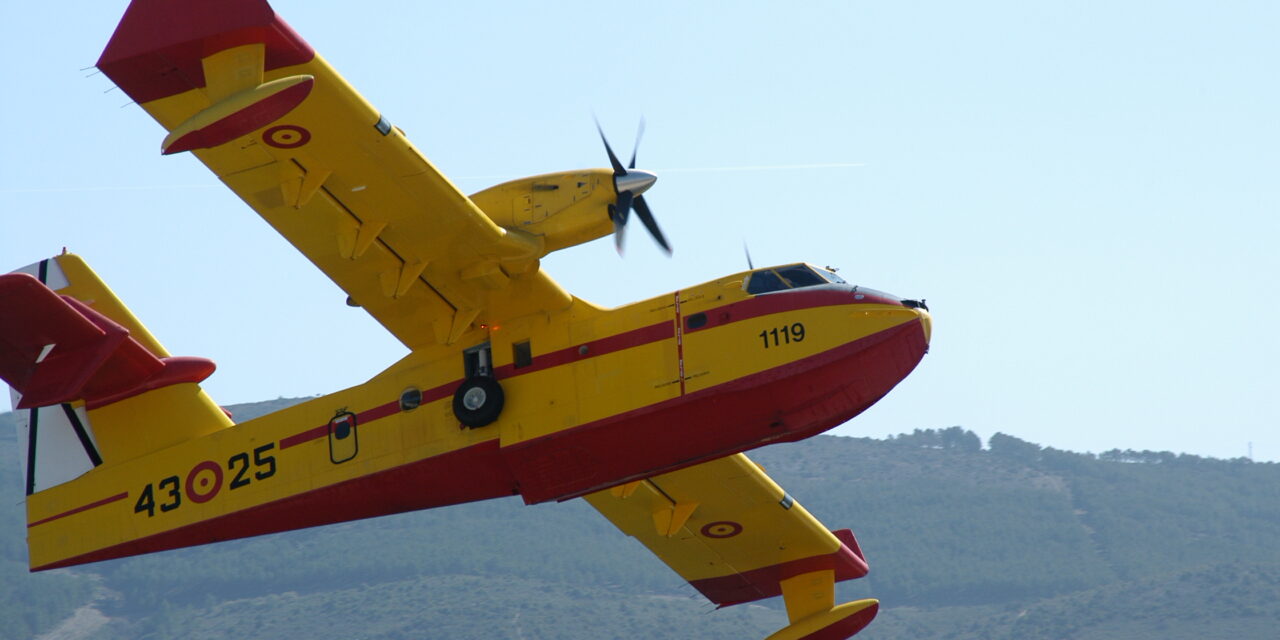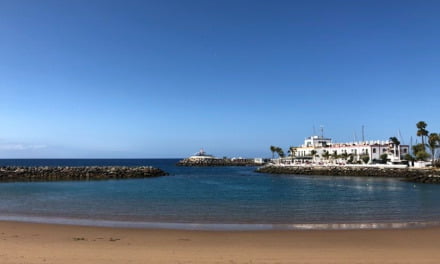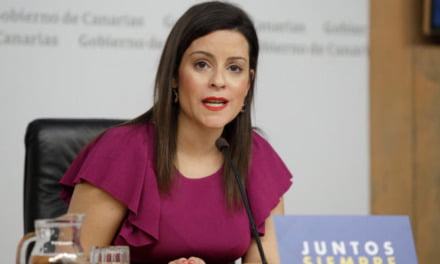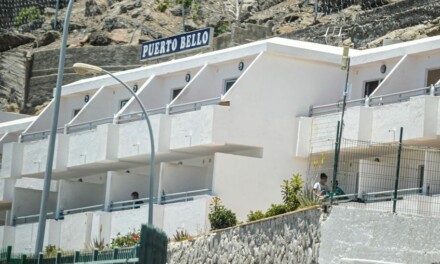During this past Saturday night, rains recorded on the northern part of Tenerife Island have successfully cooled the area where a wild fire has burned for nearly two weeks, and increased humidity, which has facilitated operational work over recent hours, and significant reactivations have not occurred. Scientists and climate researchers warn that we can expect more of these kinds of unpredictable fires.
The latest reconnaissance flights over the affected area confirm that the perimeter appears to remain stabilised, with some smouldering and rekindling only detected in the Mamio area of La Orotava and in the La Hornaca area of the municipality of Tacoronte.
 The fire continues in a stabilised phase, meaning it is evolving within established control lines, as projected, and firefighting efforts are now focused on maintaining control, but it took them more than eight days to establish those control lines.
The fire continues in a stabilised phase, meaning it is evolving within established control lines, as projected, and firefighting efforts are now focused on maintaining control, but it took them more than eight days to establish those control lines.
Scientists believe that the fire, which affected some 14,700 hectares over 11 days, is a clear indication of the significant influence of global warming.
The Tenerife fire wouldn’t have been as intense nor as destructive without climate change, say the experts. The extraordinary heatwave before this major fire, along with the episodes of high temperatures throughout the summer across the island, created the conditions to intensify an unpredictable fire that affected huge swathes of the Coronal Forest. This marks a turning point in the management of such incidents for the whole archipelago, as it now confirms the reality of climate change that some had been trying to deny. Climate change is no longer a distant future scenario; it’s a current reality and a clear and present danger.
This ferocious fire “was not caused by climate change”

Pedro Dorta, a geographer from the Chair of Disaster Risk Reduction and Resilient Cities at the University of La Laguna (ULL), exercises caution in directly attributing the fire to climate change: “Attributing a specific event to climate change is very complex.” Specifically, a complex attribution study would be needed to accurately relate the two phenomena. “There have always been fires in the Canary Islands; what climate change does is create conditions that favour the development of unpredictable fires,” he concludes.
Omaira García, atmospheric physicist at the Spanish State Meteorological Agency (AEMET) Izaña Atmospheric Research Centre, which narrowly escaped the flames, also expresses this perspective. She emphasises that a fire as virulent as the one that ravaged parts of the Tenerife mountains “was not caused by climate change,” but its ferocity stems from global warming.
According to José Miguel Viñas, a meteorologist at Meteored, a major fire like this wouldn’t have been “impossible” without the climatic conditions driven by global warming, but in his opinion it would be “very unlikely” to have occurred under what we might consider normal conditions. For Viñas, without climate change, it would be very difficult for a “monster” like the one that devastated thousands of hectares of Tenerife’s landscape to develop as rapidly as this wildfire did.
The potential for more intense unpredictable fires due to climate change is one of the predictions from various reports by the Intergovernmental Panel on Climate Change (IPCC). “One of the consequences is the increased frequency and intensity of heatwaves,” is that we can expect more unpredictability explains García, emphasising the direct link between these high-temperature episodes and fires.
Record Heatwaves
 This year, the archipelago has experienced very hot weather without relief. In the days leading up to this fire, The Canaries have endured record heatwaves. Over the five days of extreme temperatures prior, up to 40 historical records were broken: 21 for maximum day time temperatures and 19 for minimums. And it’s the latter that’s crucial. “Instead of cooling down, it’s becoming more common to experience torrid or even infernal nights, with temperatures reaching 25 to 30 degrees,” García reveals, underscoring that “these conditions are not helpful.”
This year, the archipelago has experienced very hot weather without relief. In the days leading up to this fire, The Canaries have endured record heatwaves. Over the five days of extreme temperatures prior, up to 40 historical records were broken: 21 for maximum day time temperatures and 19 for minimums. And it’s the latter that’s crucial. “Instead of cooling down, it’s becoming more common to experience torrid or even infernal nights, with temperatures reaching 25 to 30 degrees,” García reveals, underscoring that “these conditions are not helpful.”
Aside from the danger posed by rising temperatures, the prolonged duration of these heatwaves is more concerning. “This causes fires, if they occur, to also extend for more days,” insists the atmospheric physicist, noting that the fire that struck Tenerife “took more than a week to stabilise.” Highly unusual.
The climatic reality has asserted itself in the Canaries. With more heat – and for longer periods – and less rain – or fewer days of torrential rains – the risk of a simple spark turning into a violent fire increases. It’s worth noting that Tenerife’s fire is not the first this year. The first ravaged 2,900 hectares near Puntagorda in the island of La Palma. “Both fires met the conditions we know as the 30-30-30 rule,” García explains, namely, more than 30 degrees Celsius temperature, less than 30% humidity, and winds blowing at more than 30 kilometres per hour.
Agricultural abandonment
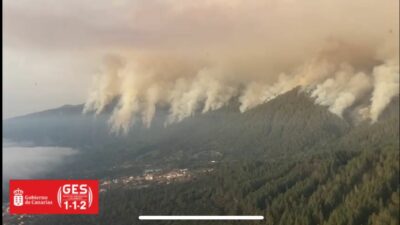 However, for Dorta, climate change isn’t the only factor that played a leading role in this fire. Many factors have contributed to its rapid spread, starting with its origin in an inaccessible topography and the state of the forested area itself. The “agricultural abandonment” that the Canary Islands have experienced in recent years has provided the flames with ample “fuel,” causing them to spread uncontrollably. “Agricultural abandonment is a reality and a risk factor,” Dorta emphasises.
However, for Dorta, climate change isn’t the only factor that played a leading role in this fire. Many factors have contributed to its rapid spread, starting with its origin in an inaccessible topography and the state of the forested area itself. The “agricultural abandonment” that the Canary Islands have experienced in recent years has provided the flames with ample “fuel,” causing them to spread uncontrollably. “Agricultural abandonment is a reality and a risk factor,” Dorta emphasises.
Tenerife’s fire is just another example of the growing power of fires on a global scale due to rising temperatures, now at 1.2ºC above the pre-industrial period. Canada, both coasts of the United States, Greece, and Hawaii have all fallen victim to this new generation of fires, what is known as “sixth generation”. This means that fires are able to generate their own microclimates, defying meteorological logic, Viñas explains.
This unpredictability of these fires makes their movement and behaviour, as Rosa Dávila, president of the Cabildo de Tenerife Island Council, described it, “erratic.”
 “These fires create local winds distinct from the prevailing ones, leading to a disruption in fire extinguishing planning,” Viñas insists. This is what makes these fires especially brutal, as firefighting efforts could endanger the lives of personnel. “A few years ago in Portugal,” for example “a fire took an unexpected turn, heading back towards the area to where the authorities had instructed the population flee. Dozens died,” Viñas summarises.
“These fires create local winds distinct from the prevailing ones, leading to a disruption in fire extinguishing planning,” Viñas insists. This is what makes these fires especially brutal, as firefighting efforts could endanger the lives of personnel. “A few years ago in Portugal,” for example “a fire took an unexpected turn, heading back towards the area to where the authorities had instructed the population flee. Dozens died,” Viñas summarises.
The Canaries will need to adapt to this new reality sooner rather than later. Unpredictable fires as violent as the one currently being stabilised on Tenerife – 8 days out of control – will become increasingly likely. “We’re seeing this in many parts of the world,” reminds José Miguel Viñas, meteorologist at Meteored.
Perhaps due to the challenges posed by sixth-generation fires and the complex nature of Canary Islands’ topography, researchers consider the management of this fire on the island a “success.”
“There have been no injuries or deaths, nor even houses affected,” asserts Dorta, noting that this fire was exclusively forest-related. Researchers have only words of gratitude for the firefighting forces, acknowledging the challenging task they faced from the outset.
 Following the fire’s stabilisation, researchers believe it’s time for reflection. “Everything we’re experiencing is a warning, but we continue to live as if climate change doesn’t concern us,” warns Dorta, emphasising that “we should start getting used to experiencing these kinds of fires.” Among scientists, there’s consensus that prevention is key – avoiding fires from starting. However, they also agree that the necessary technological tools must be put in place to have a structure that can work to contain the fire in case even a small spark emerges, Viñas emphasises.
Following the fire’s stabilisation, researchers believe it’s time for reflection. “Everything we’re experiencing is a warning, but we continue to live as if climate change doesn’t concern us,” warns Dorta, emphasising that “we should start getting used to experiencing these kinds of fires.” Among scientists, there’s consensus that prevention is key – avoiding fires from starting. However, they also agree that the necessary technological tools must be put in place to have a structure that can work to contain the fire in case even a small spark emerges, Viñas emphasises.
In this regard, Omaira García points out that the installation of thermal surveillance systems is being considered at the Izaña Atmospheric Research Centre on Mount Teide to alert to “hotspots.” Dorta adds that agriculture should be promoted to restore the damage caused by the abandonment of forested areas. Nonetheless, the most important lesson from these unpredictable fires, says Dorta, is to “seriously believe that climate change is affecting us and that we will face situations we’ve never experienced before.”

